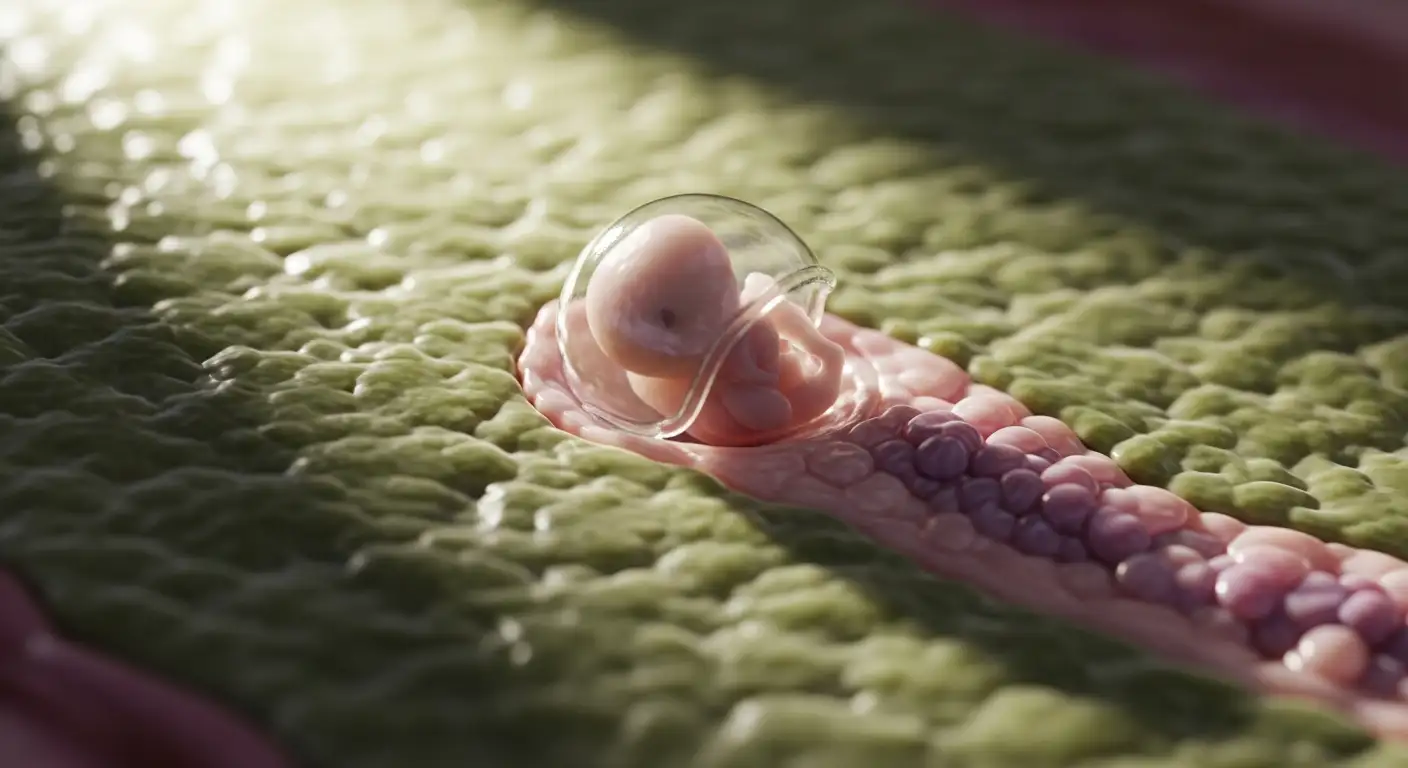Exploring shared motherhood in reciprocal IVF
Shared Parenthood Achieved Through Innovative IVF Methods

Understanding the Foundations of Reciprocal IVF and Shared Motherhood
Reciprocal IVF, also referred to as shared motherhood, has emerged as a pioneering reproductive option for same-sex female couples and LGBTQ+ families seeking biological parenthood. This approach uniquely involves both partners in the conception and gestation processes, thereby fostering emotional bonds and shared experiences that are central to modern family-building. As medical science continues to evolve, so does the accessibility, success, and acceptance of this method. This article examines the clinical workings, benefits, legal considerations, and emotional dynamics of reciprocal IVF, providing a comprehensive guide for prospective parents.
What Is Shared Motherhood Through Reciprocal IVF?
Definition of shared motherhood
Shared motherhood through reciprocal IVF is a fertility option mainly used by lesbian couples that allows both partners to be involved emotionally and biologically in creating a child. It offers an opportunity for both women to participate actively in the process, fostering a deeper connection from conception to birth. In this method, one partner provides her eggs, which are fertilized with donor sperm in a lab setting, and then the fertilized embryo is implanted into the other partner’s uterus.
How reciprocal IVF enables both partners to be involved
This approach involves each partner playing a distinct role: one offers her eggs, contributing genetically, and the other carries the pregnancy, nurturing it physically. As a result, both women can have a biological or gestational relationship with their child. This shared journey can strengthen emotional bonds, create a sense of shared parenthood, and fulfill personal and cultural desires for genetic connection.
Steps involved in the process
The process begins with thorough medical evaluation to assess egg reserve and overall health. Ovarian stimulation is then administered to encourage egg production, followed by egg retrieval under sedation. The retrieved eggs are fertilized with donor sperm in a lab, allowing embryos to develop over several days.
Once suitable embryos are available, they are transferred into the partner’s uterus who will carry the pregnancy. Remaining embryos can be frozen for future use. Throughout this timeline, couples work closely with fertility specialists and legal professionals to navigate medical and parental rights. The entire process generally takes about 6 to 8 weeks from initial evaluation to embryo transfer, offering a structured pathway to parenthood that is legally recognized and emotionally fulfilling.
The Clinical Process of Reciprocal IVF (ROPA)
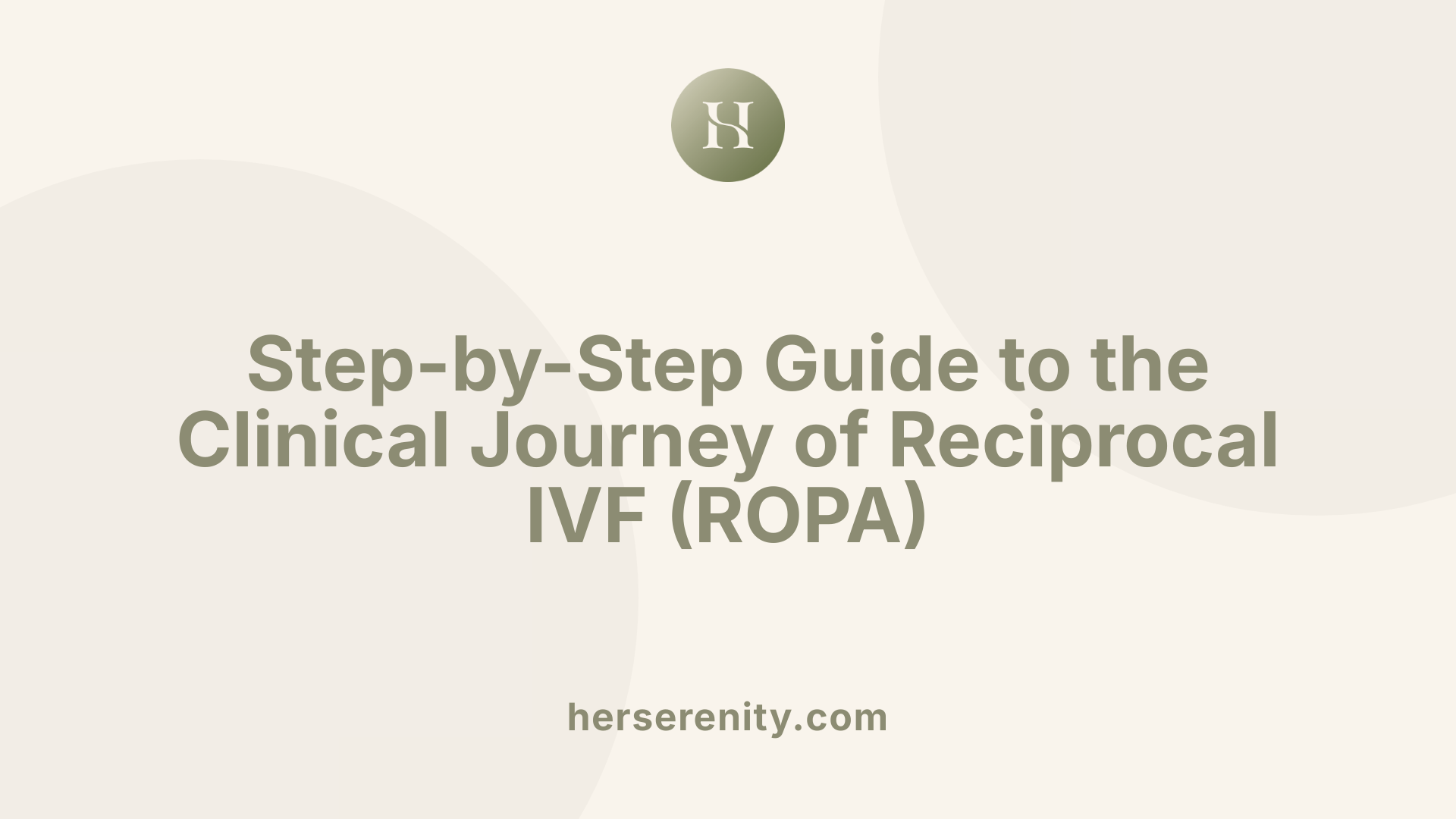
Medical evaluation and suitability assessment
The journey of reciprocal IVF, also known as ROPA (Reception of Oocytes from PArtner), begins with comprehensive medical evaluations. Both partners undergo fertility assessments, including blood tests and ultrasounds, to determine ovarian reserve and overall health. These evaluations help identify the most suitable candidates for the procedure and ensure any medical conditions are managed beforehand.
Ovulation induction and egg retrieval
Once deemed suitable, the partner donating eggs undergoes ovarian stimulation through hormone injections. This stimulates the ovaries to produce mature eggs. Monitoring with ultrasounds and blood tests is conducted regularly to track progress. When the eggs reach maturity, a minor surgical procedure, typically performed under sedation or anesthesia, is used to retrieve the eggs from the ovaries.
Fertilization with donor sperm
The eggs collected are fertilized with donor sperm in the laboratory. Fertilization can be achieved through conventional IVF or Intracytoplasmic Sperm Injection (ICSI), depending on specific medical considerations or sperm quality. The fertilized eggs then develop into embryos over 5-6 days, with the healthiest embryo selected for transfer.
Embryo culture and transfer
The selected embryo is transferred into the uterus of the partner who will carry the pregnancy. This procedure is minimally invasive and usually completed within 30 minutes. Remaining viable embryos may be cryopreserved for future use. The success of the transfer depends on factors such as embryo quality and uterine environment.
Timeline and recovery
From the start of ovarian stimulation to embryo transfer, the process typically takes about 6 to 8 weeks. After the embryo transfer, the partner carrying the pregnancy may undergo hormonal support to facilitate implantation. Most women resume normal activities within a few days post-procedure, although some may experience mild cramping or spotting. Follow-up appointments include pregnancy testing and ultrasounds to confirm successful implantation.
This careful and coordinated process allows both partners to be biologically involved, fostering a shared experience and emotional connection. Although the procedure involves medical risks such as ovarian hyperstimulation or pregnancy complications, advancements have made reciprocal IVF a safe and effective option for many lesbian couples seeking parenthood.
Benefits and Personal Impact of Reciprocal IVF in Family Building
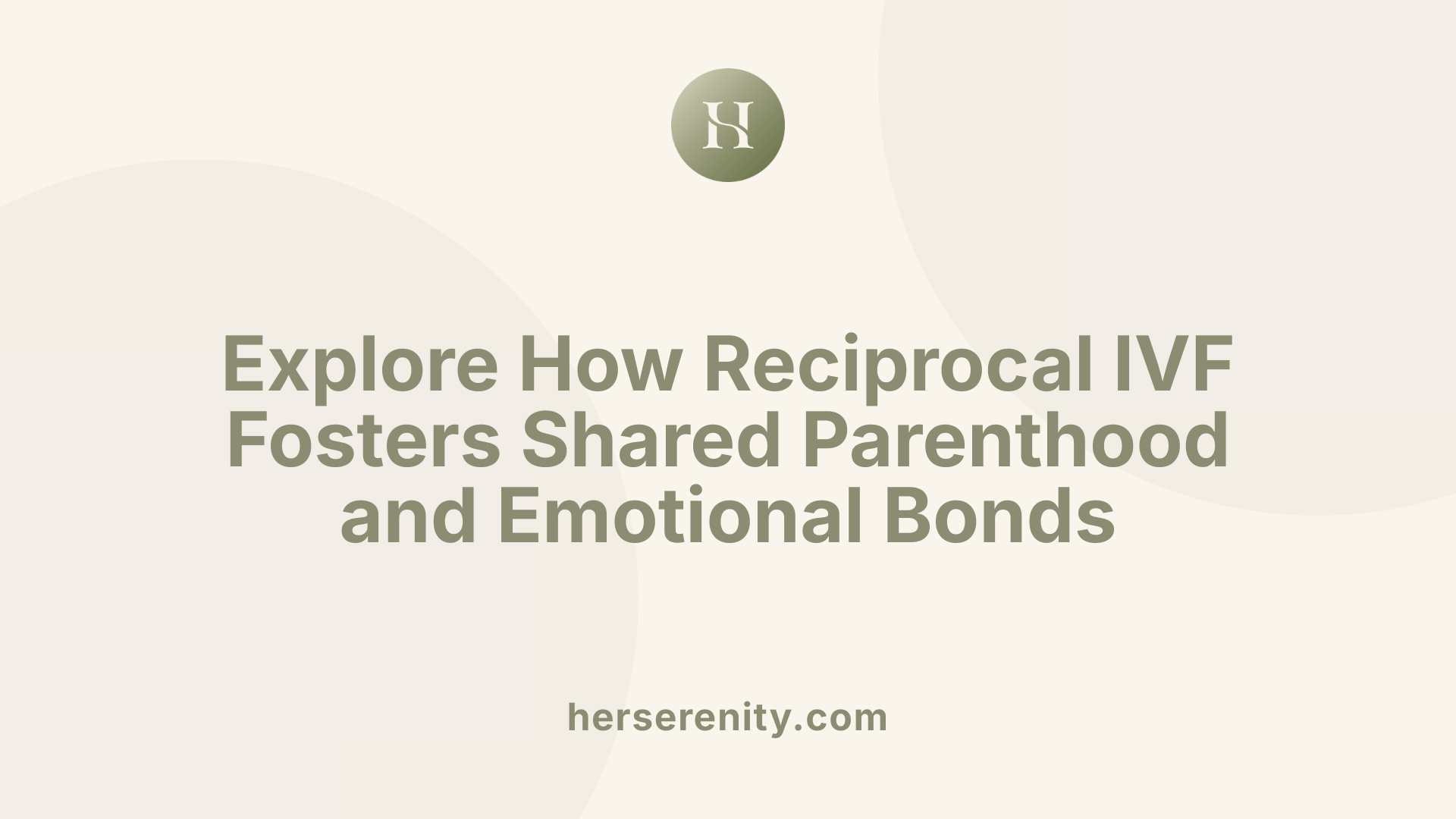
What are the benefits of shared motherhood in reciprocal IVF?
Reciprocal IVF creates profound personal and emotional benefits for lesbian couples seeking to build a family. One of the primary advantages is that both partners can have a biological or gestational link to the child. The partner providing the eggs maintains a genetic connection, while the other partner, who carries the pregnancy, experiences firsthand the process of gestation.
This shared involvement fosters deep emotional bonds, making the journey toward parenthood more meaningful. It allows both women to actively participate in conception and pregnancy, transforming the experience into a joint effort rather than a one-sided procedure.
Participating in this process also reinforces their partnership and shared commitment. It respects individual reproductive preferences and offers a personalized approach to family creation. Success rates for reciprocal IVF are often comparable to traditional IVF, especially when high-quality, young donor eggs are used, providing an additional layer of confidence in the process.
Overall, reciprocal IVF is an inclusive, supportive method that not only helps couples achieve biological parenthood but also enhances their emotional connection, bond, and family identity.
How does reciprocal IVF enable a shared pregnancy experience?
In reciprocal IVF, one partner undergoes ovarian stimulation to produce eggs, which are then fertilized with donor sperm in a laboratory. The resulting embryo is then transferred into the uterus of the carrying partner. This process allows both women to physically experience pregnancy and childbirth.
Carrying the pregnancy herself, the partner who does not provide the eggs can experience the physical and emotional journey of pregnancy, from ultrasounds and prenatal care to labor and delivery. This shared experience can significantly deepen mutual understanding and connection.
How does reciprocal IVF strengthen emotional bonds?
Going through the fertility process together creates a unique shared journey that enhances emotional intimacy. It offers an opportunity for both partners to participate actively in conception, pregnancy, and childbirth.
The involvement can help in building a stronger sense of shared parenthood and mutual support. Celebrating milestones together—from fertilization to birth—fosters a sense of unity and achievement.
Furthermore, sharing the physical process of pregnancy can lead to greater empathy and bonding, enriching their emotional relationship as they prepare to become a family.
How do success rates compare to traditional IVF?
Success rates for reciprocal IVF are generally similar to those of conventional IVF. Factors such as the woman's age, egg quality, and overall health influence outcomes.
Research shows that live birth rates can range from approximately 25% to over 50% per cycle, depending on the clinic and individual circumstances. Notably, some studies report that reciprocal IVF has comparable or even slightly higher success rates in certain cases, possibly due to careful selection of reproductive prognosis for each woman.
In conclusion, reciprocal IVF offers a flexible and effective pathway for same-sex female couples to achieve biological parenthood while enriching their shared pregnancy experience.
Legal and Ethical Considerations in Reciprocal IVF
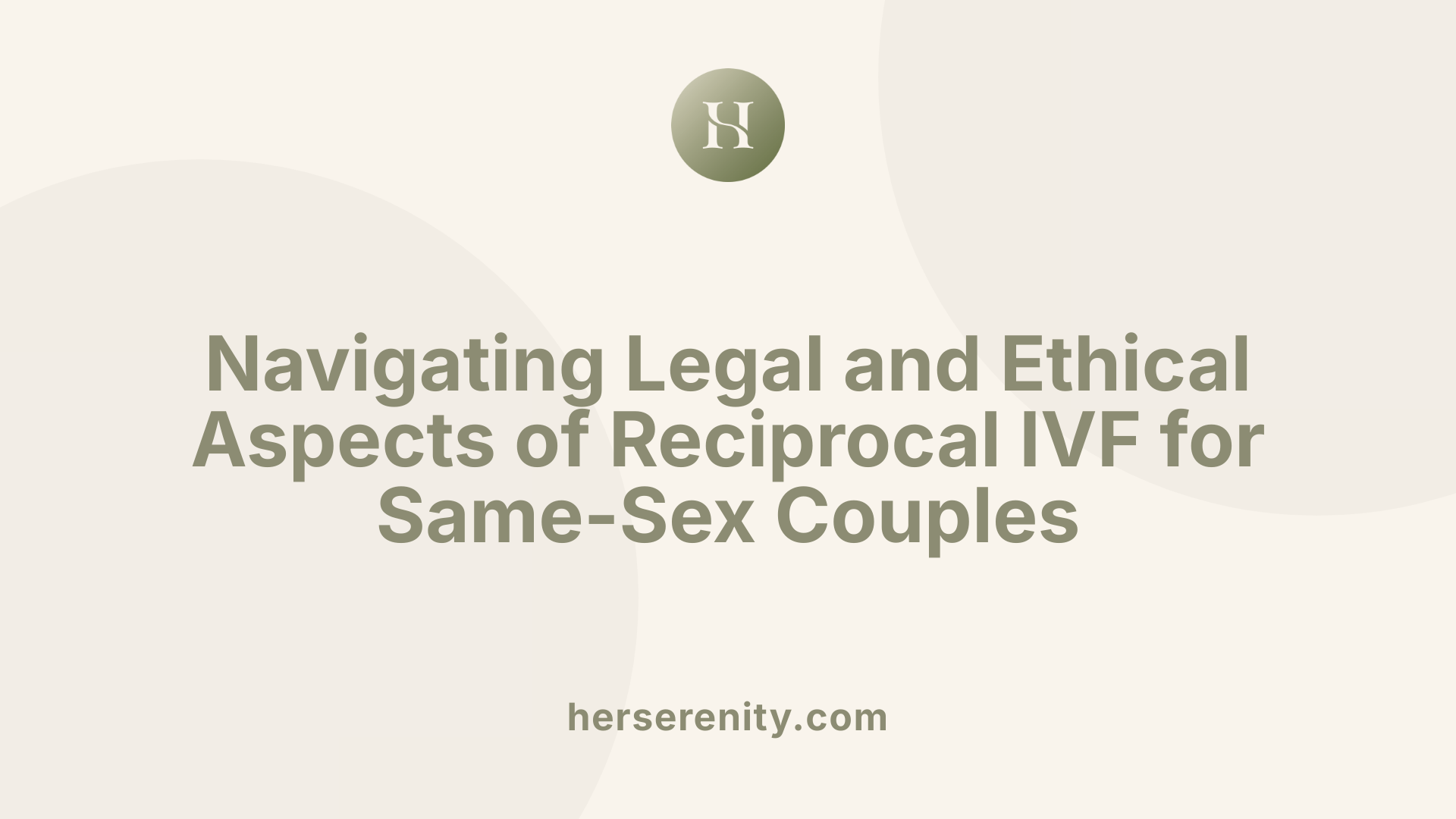
What are the legal, ethical, and regulatory considerations in reciprocal IVF?
Reciprocal IVF raises several important legal, ethical, and regulatory issues that couples and providers must consider. Legally, recognition of both partners as parents varies by jurisdiction. In some regions, laws automatically recognize the birth mother as the legal parent, but additional legal steps such as second-parent adoption or consent documentation are often required for the non-biological parent to secure parental rights.
Ethically, the process involves informed consent and respect for individual autonomy. It's vital that both partners understand and agree on all aspects of treatment, including embryo storage and future disposition decisions. Surplus embryos can present complex decisions—whether to cryopreserve, donate, or discard them—which necessitates clear communication and legal agreements.
Regulations governing reciprocal IVF differ globally and often govern the handling of gametes and embryos, documentation requirements, and protections against discrimination. Many countries have evolving policies supporting LGBTQ+ families, but restrictions still exist in some areas.
Healthcare providers must balance respecting personal beliefs with legal mandates and anti-discrimination laws. Some clinics reserve the right to refuse treatment based on personal or institutional principles, but they must still comply with laws ensuring equitable access.
Overall, thorough legal planning—such as creating explicit parentage agreements, understanding local laws, and proper documentation—is crucial. Couples should consult legal professionals and experienced fertility clinics to navigate these considerations and ensure that their family-building process is both ethically sound and compliant with applicable regulations.
Success Rates and Clinical Outcomes of Reciprocal IVF
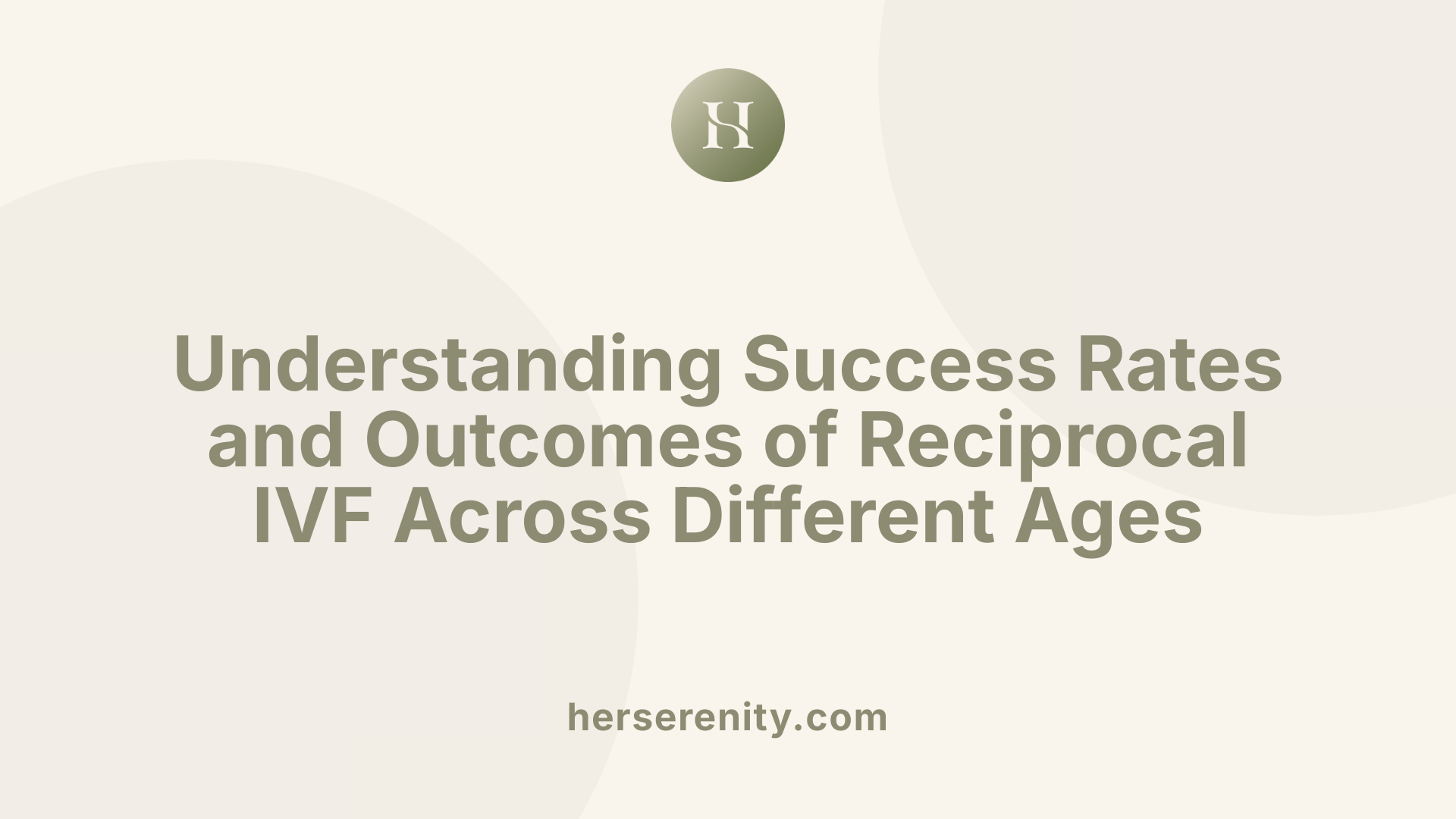
What are the success rates and clinical outcomes associated with reciprocal IVF?
Reciprocal IVF offers couples a chance at biological parenthood, and its success rates are closely linked to factors such as the age and health of the egg donor. Women under 35 generally experience success rates of about 41-43%, while those over 40 see lower success, around 13-18%. These figures are comparable to traditional IVF success rates, provided that both partners are similar in terms of ovarian reserve and overall health.
Other factors influencing success include sperm quality, lifestyle choices such as smoking or weight, and medical conditions. Sperm donor quality is also crucial, impacting fertilization and embryo development.
The IVF process involves several steps: initial fertility tests for both partners, ovarian stimulation, egg retrieval, fertilization with donor sperm, and embryo transfer. This process typically spans 2 to 6 months.
Studies show that when these factors are optimized, the pregnancy success rates for reciprocal IVF are similar to conventional IVF. This makes it an effective option for lesbian couples aiming for shared biological parenthood.
In summary, reciprocal IVF provides an accessible pathway with promising success outcomes, especially when individual fertility assessments affirm favorable prospects. It remains a tailored approach that offers both emotional and biological fulfillment to partners, with success rates influenced primarily by age, health, and quality of the gametes involved.
Accessibility, Cost, and Support Resources in Reciprocal IVF
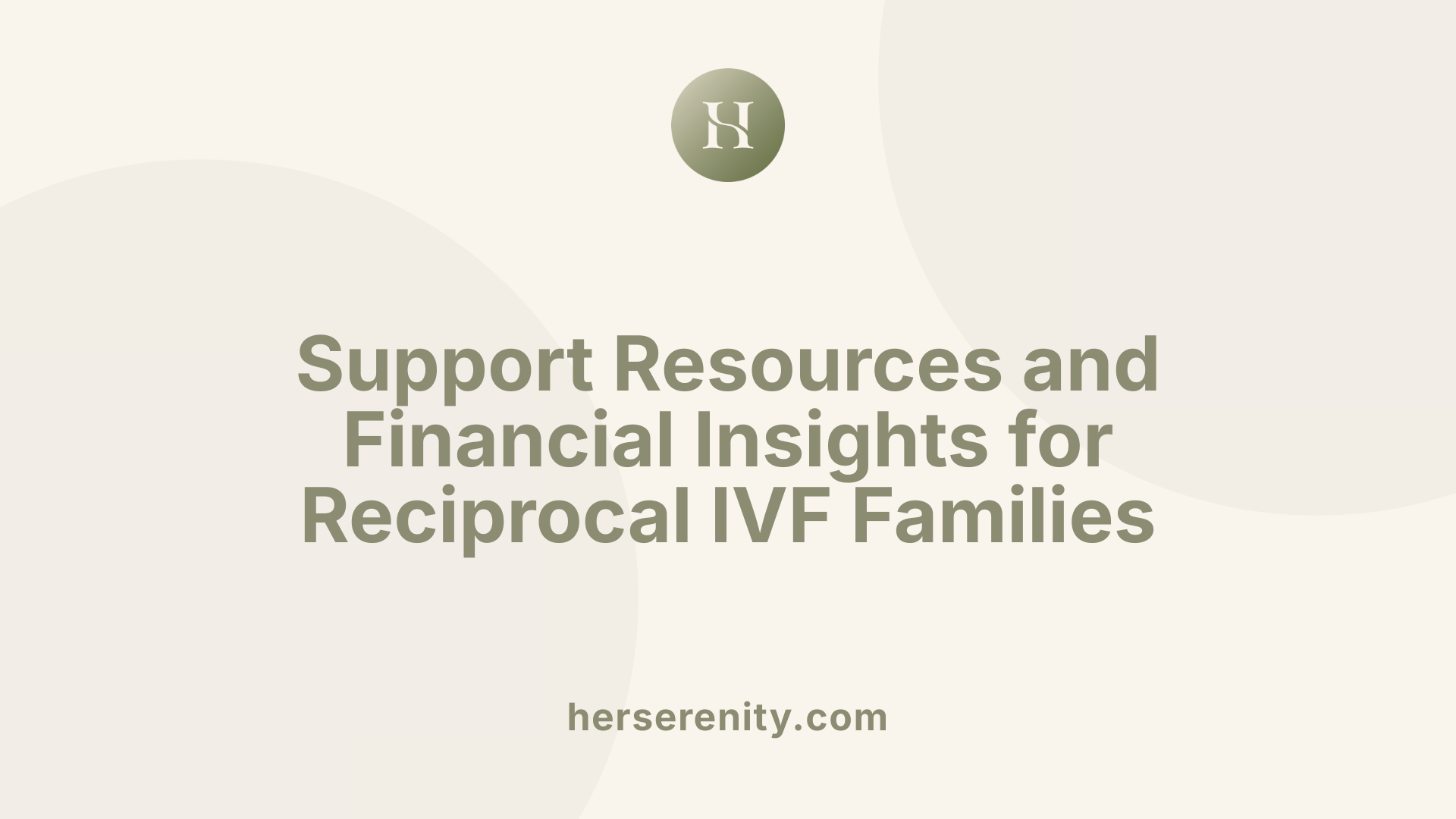
What are the costs, resources, and support options available for reciprocal IVF?
Reciprocal IVF can be a profound journey for same-sex female couples seeking to grow their family. The financial aspect of this treatment varies widely depending on location, clinic, and additional services. In the United States, a typical cycle ranges from approximately $10,000 to over $30,000. This includes expenses such as ovarian stimulation medications, egg retrieval procedures, fertilization with donor sperm, embryo freezing, and transfer.
Many clinics offer comprehensive packages, but costs can escalate with genetic testing, legal advice, and cryopreservation services. It’s essential to consider all these components when planning financially.
Insurance coverage for reciprocal IVF remains limited nationwide. Some states have mandates requiring insurance providers to cover fertility treatments, but coverage varies. Patients often need to explore additional funding resources like payment plans, fertility loans, and grants offered by specific clinics or organizations dedicated to LGBTQ+ family building.
Support services play a vital role in this process. Couples can access counseling to navigate emotional challenges, including feelings of stress or anxiety. Legal support is crucial for establishing parental rights, especially relating to embryo storage and consent matters.
Additionally, many clinics provide logistical assistance such as cycle tracking, monitoring appointments, and access to advanced reproductive technologies that can enhance success rates and emotional well-being. These resources help couples feel supported throughout their fertility journey.
In summary, while reciprocal IVF involves significant financial and emotional investment, a range of support options and resources are available to assist couples in making informed decisions and experiencing a positive family-building process.
Charting Your Path to Parenthood
Reciprocal IVF stands as a testament to the advances in reproductive medicine, offering lesbian couples and LGBTQ+ families an empowering, inclusive path to parenthood. Its ability to combine medical innovation with emotional and biological involvement makes it a preferred choice for many. While navigating legal and financial landscapes can be complex, the support from specialized clinics, legal advisors, and counseling services can ease the journey. Ultimately, understanding the clinical process, benefits, and considerations involved in reciprocal IVF empowers prospective parents to make informed decisions, celebrating the profound possibilities of shared parenthood.








